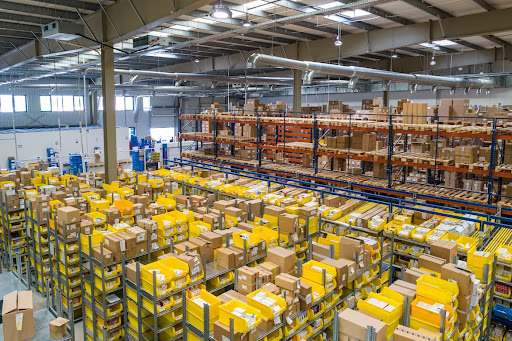
 Loading... Please wait...
Loading... Please wait...Save Money. Grow Your Own!
Fast Plain Box Shipping.
We ship to the US & Canada.
Posted on 31st Jan 2023
Running a warehouse is no easy task. It requires careful planning, organization, and execution to ensure that goods are stored safely and efficiently. Managing a warehouse also involves having the right tools and resources in place to help streamline operations. From storage solutions and safety protocols to tracking systems and technology, there are certain things every warehouse needs in order to run smoothly.
In this article, we will discuss the key elements of successful warehouses so you can make sure your facility is running as effectively as possible.

Having the right tools for measuring is essential when it comes to stocking and organizing a warehouse. You'll need a good set of scales, rulers, tape measures, and other measurement equipment so you can accurately measure and track inventory. The folks behind 1800scales note that most warehouses benefit from having digital measurement tools, as they can be more accurate and easier to use than traditional measuring equipment. When purchasing measuring tools, make sure that they meet industry standards so you can be confident in the results.
A warehouse isn't much good without storage solutions. It's important to have the right shelving, bins, carts, containers, and other storage items to keep everything organized and easily accessible. Consider how you will store higher-value items and how you will handle the overflow. You may need extra storage for seasonal or promotional items so that your regular inventory doesn't become cluttered.
Depending on the nature of your business, you may also want to invest in special equipment such as forklifts or pallet jacks to help move around heavier items. It's also essential to label containers and storage areas to ensure that everything is easy to locate.
Every warehouse should strive for a safe working environment no matter how small or large it is. Regularly inspect the premises for any necessary repairs or changes, such as proper lighting and slip-resistant floors. Document all safety regulations and protocols and ensure that they are understood by all personnel. Conduct safety discussions or orientations to educate employees on proper lifting, handling techniques, and hazard prevention. Additionally, warehouses should designate areas for storing hazardous materials properly and make sure those areas are off-limits to employees who don’t need access.
Organizing inventory is one of the most important parts of running a successful warehouse. Implement a tracking system to monitor stock levels and keep track of items that need replenishing or updating. It's also important to have an efficient system for logging in new products, making sure orders are placed on time, and sending out shipping documents to customers. Automating these processes can help save time and avoid errors. Finally, be sure to label all items clearly so employees can quickly locate them when needed.
Training employees is a crucial component of any warehouse operation. It ensures that all workers understand the policies, procedures, and safety regulations in place to protect their coworkers, the facility, and its contents. There are several areas of training that should be covered before allowing a new employee to work in the warehouse.
The first step is basic safety training. This should include instruction on the proper use of warehouse equipment, such as forklifts and pallet jacks. Additionally, employees must be taught how to operate in confined or hazardous spaces, as well as how to identify potential safety risks while they work.
The second step involves teaching workers how to handle inventory correctly. Employees should understand the proper techniques for storing, retrieving, and delivering items and how to mark them with tracking numbers. They should also be taught how to use any computer or automated systems installed in the warehouse.
Finally, employees should learn about customer service best practices. This includes learning how to process orders quickly and efficiently while maintaining a high level of customer satisfaction.
By investing in employee training, warehouses can ensure that their products are handled properly and that their workers are aware of the safety protocols to protect them. This in turn will lead to increased efficiency and profitability for the business.

The success of any warehouse operation depends on several factors. Having proper storage and safety protocols in place, as well as effective inventory tracking and employee training will help ensure that your warehouse is running smoothly and efficiently.
With the right measures in place, you can rest assured that you're providing your customers with an exemplary service experience. When it comes to warehouse operations, proper planning is key. By following these steps, you can ensure a successful and profitable warehouse environment.